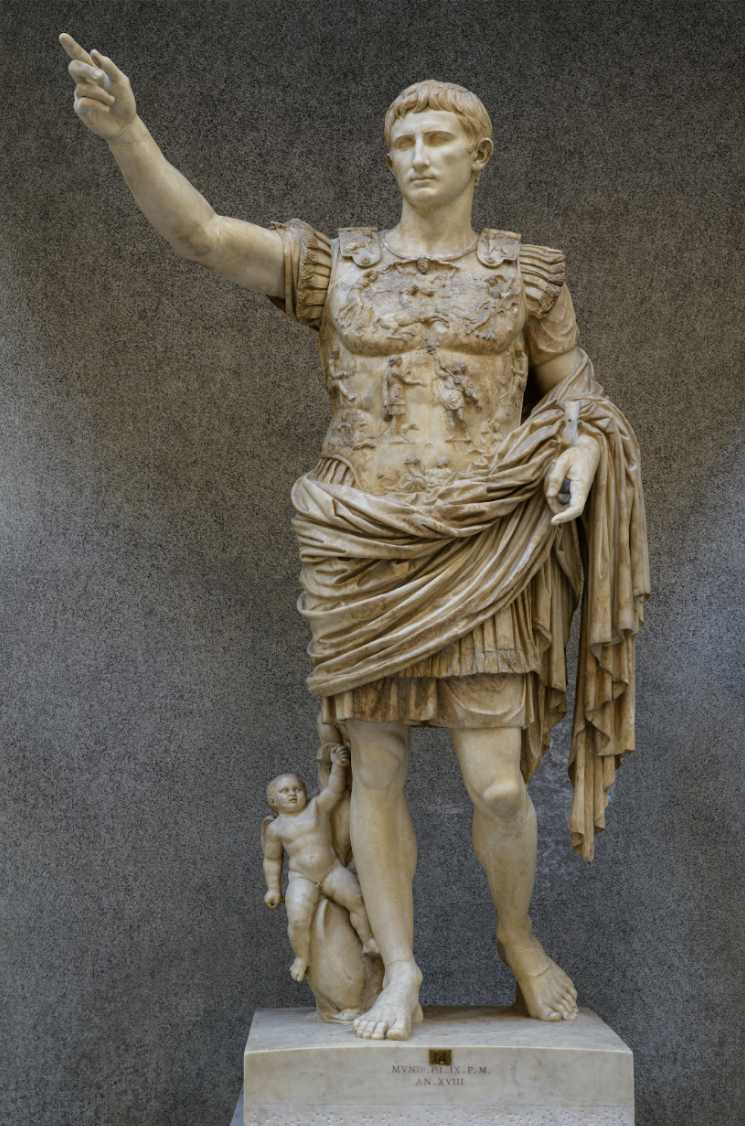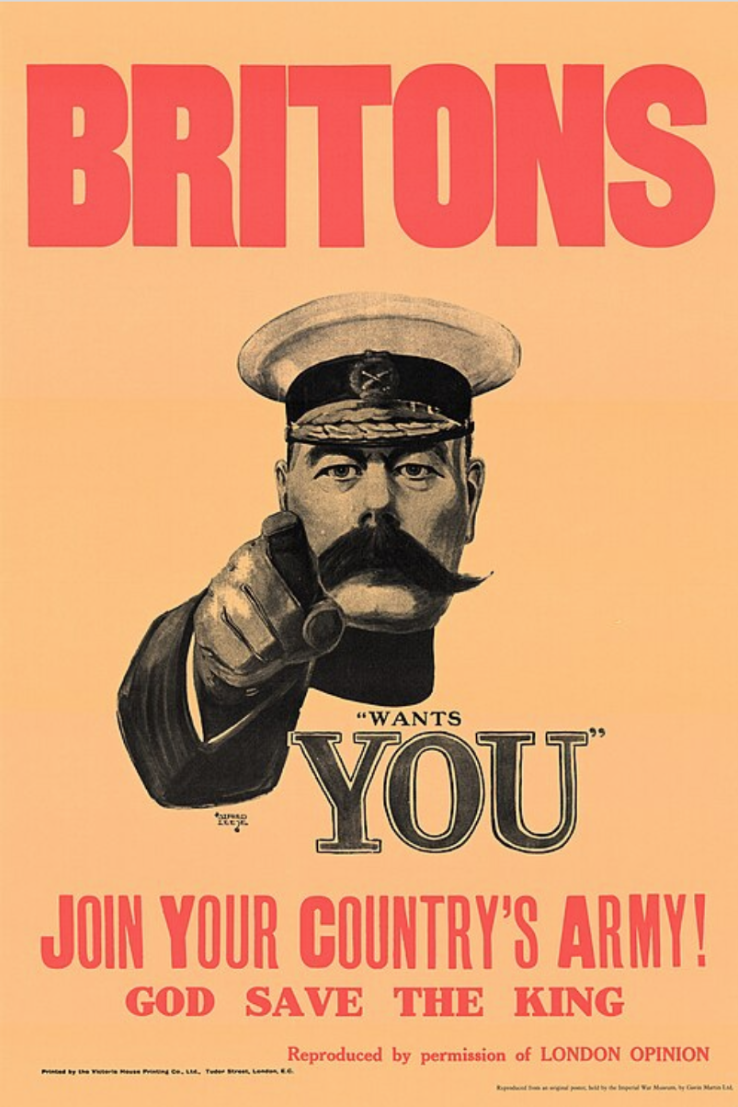The Role of Art as Propaganda
- Angel Tung
- Jul 12
- 4 min read
Art has an unparalleled ability to stir emotions, challenge perspectives, and communicate ideas, making it a powerful instrument for propaganda across cultures and eras. Far beyond mere aesthetics, propaganda art leverages visual, auditory, or performative media to inspire, persuade, or unite audiences, often with profound societal impact.
Dating back to ancient Rome, art was a state-controlled medium to project imperial power and legitimacy. Sculptures, such as statues of emperors, were strategically placed in public spaces like forums, basilicas, and temples to communicate divine sanction and military supremacy. These works were not mere decorations but deliberate tools of propaganda, designed to shape public perception and consolidate loyalty among both citizens and subjugated peoples.
One notable example is the Augustus of Prima Porta (c. 20 BCE), a marble statue that portrays Emperor Augustus in a youthful, idealised contrapposto pose, imbued with divine attributes. A cupid at his feet links him to Venus, the mythological ancestor of the Julio-Claudian dynasty, while the breastplate depicts his diplomatic triumph over the Parthians, casting him as a harbinger of peace and stability. This imagery countered narratives of ruthless power consolidation, presenting Augustus as a restorer of traditional Roman values following years of civil war.

Fast forward to the 20th century, the exigencies of World War I underscored art’s capacity to galvanize civilian populations during times of national crisis, transforming abstract political imperatives into visceral, personal calls to action. In Britain, where conscription was delayed until 1916, voluntary enlistment was critical in 1914. Alfred Leete’s Lord Kitchener Wants You poster became a cornerstone of this effort. Featuring Field Marshal Lord Kitchener’s stern gaze and outstretched finger, paired with bold text (“YOUR COUNTRY NEEDS YOU”) and Union Jack colors, the poster amplified patriotic sentiment. Its psychological impact, described by E.B. Goldstein as the "differential rotation effect," created a sense of direct engagement, with Kitchener’s eyes appearing to follow the viewer (Goldstein, 1989). Carlo Ginzburg likens this to depictions of Christ and Alexander the Great, noting its ability to forge a personal connection with authority, while Pearl James highlights its use of discursive psychology to evoke guilt and responsibility (Ginzburg, 1990; James, 2011). Similarly, in 1917, James Montgomery Flagg’s I Want You for U.S. Army adapted this approach for American audiences, using Uncle Sam’s piercing stare and commanding text to underscore individual duty. These posters exemplify how propaganda art weaponizes visual rhetoric to mobilize collective action.


Moreover, totalitarian regimes in the 20th century harnessed art to cultivate cults of personality and suppress dissent. In the Soviet Union, Aleksandr Deyneka’s Lenin’s outing with children (1938) exemplifies this strategy. Created during Stalin’s Great Purge (1936–1938), the painting mythologizes Lenin as a benevolent, deified figure, using bright colors and idealized figures characteristic of socialist realism. This style, as defined by Andrei Zhdanov, depicted reality not as it was but as it "should be" under socialism, omitting references to repression like the Red Terror (Zhdanov, 1934). By portraying Lenin as a caring "father" of the revolution, the artwork legitimized Stalin’s leadership while erasing historical complexities.

Similarly, in China, propaganda art during the Cultural Revolution (1966–1976) elevated Mao Zedong to near-mythical status. Liu Chunhua’s Chairman Mao Goes to Anyuan (1968) depicts Mao’s 1921 visit to Anyuan as a revolutionary milestone, despite historical debates about his role. The painting’s heroic composition and vibrant palette align with socialist realism’s idealized aesthetic, reinforcing Mao’s centrality to the revolution. Additionally, the Mao Zedong Portrait at Tiananmen Square (1949), a 6 × 4.5-meter oil painting, remains an enduring symbol of Mao’s cult of personality, its sheer scale and visibility in Beijing’s political heart reinforcing state authority. As Stefan Landsberger notes, such imagery was "omnipresent and inescapable," designed to induce conviction through repetition and the absence of alternatives (Landsberger, 1995).


Finally, propaganda art’s legacy persists in modern contexts, adapting to new media and cultural landscapes while retaining its persuasive power. This is seen in the Keep Calm and Carry On poster, designed in 1939 to bolster British resilience amid World War II’s threat of air raids and invasion. Its minimalist design and stoic message aimed to promote collective effort. Though rarely distributed during the war, its rediscovery in 2000 transformed it into a cultural icon, its adaptability fueling its meme-like popularity. Historian Mark Connelly argues that the poster’s enduring appeal stems from its evocation of wartime unity and a romanticized vision of British stoicism (Connelly, 2004). Yet, its true versatility lies in its universal call to resilience, which transcends its original context. This adaptability has fueled its meme-like proliferation across digital platforms, commercial products, and parodies, from mugs to T-shirts, with phrases like “Keep Calm and Drink Tea” or “Keep Calm and Code On.” During the COVID-19 pandemic, the poster’s legacy was vividly reimagined in adaptations such as “Keep Calm and Wash Your Hands” or “Keep Calm and Stay Home.” These modern iterations, often shared on social media, harnessed the poster’s familiar aesthetic to promote public health measures and collective resilience. Unlike the original, which was state-driven propaganda, these adaptations were largely grassroots or commercially driven.

In conclusion, propaganda art, from Roman sculptures to modern posters, leverages visual and psychological mechanisms to shape perceptions and behaviors. By idealizing leaders, evoking emotions, and suppressing dissent, it transforms art into a tool of statecraft. Its effectiveness hinges on its ability to appear authentic, resonating with audiences without overt coercion. Understanding its techniques and impacts remains crucial in navigating the visual rhetoric of power in contemporary society.
Other References:
Connelly, M. (2004). The Great War, Memory, and Ritual. London: Routledge.
Ginzburg, C. (1990). Myths, Emblems, Clues. London: Hutchinson Radius.
Landsberger, S. (1995). Chinese Propaganda Posters: From Revolution to Modernization. Amsterdam: Pepin Press.
Zhdanov, A. (1934). Soviet Literature: The Richest in Ideas. Moscow: State Publishing House.





Comments